Nissan 2012 Leaf
Now in its second model year, the 2012 Nissan Leaf was the first battery electrical vehicle to be designed in volume and sold by a major automaker in several decades. The 5-door compact hatchback includes a hanging look that is as pioneering and trendy because the Toyota Prius hybrid was in its day. The Leaf is easy to drive, provides snug house for four and accommodates 5 when needed, and prices maybe one-third to one-quarter as abundant per mile to operate as a gasoline automotive--assuming you'll afford the upper initial price.
The 2012 Leaf's style evolves the five-door hatchback type in some putting ways in which. The taillights are mounted high up and vertically, containing a rib crammed with red LED brake lights. The body swells round the rear wheels, and instead of a grille to admit air into the radiator it does not have, the Leaf incorporates a cowl in the center of the nose that opens to administer access to its charging ports. Leaf fans can be able to differentiate cars with the SL trim level from the SV base model by their small solar panel on the roof spoiler at the top of the tailgate.
Rather than an engine with some range of cylinders and a power output in horsepower, the Leaf is propelled by an electrical motor driving the front wheels and rated in kilowatts of output. The motor puts out 80 kw (107 hp), which propels the 320zero-pound automotive from 0 to sixty mph in less than ten seconds. Prime speed is capped at ninety mph. Its steering is numb and therefore the roadholding and handling are competent instead of inspiring, though it all works simply fine.
Unlike the automotive to that it's often compared, the 2012 Chevrolet Volt, the 2012 Leaf runs solely on battery power--it does not have the Volt's range-extending gasoline engine. The twenty four kilowatt-hour lithium-ion battery pack is constructed into the Leaf's floor and recharges by plugging it into the electrical grid, using either customary a hundred and twenty-Volt power or a charging station that operates at 240 Volts. Recharging time for a absolutely depleted pack is seven to ten hours with the charging station, and double that on commonplace power. Part of Leaf purchase includes a visit from a contractor, organized via your Nissan dealer, to assess what can be necessary to install a 240-Volt charging station in your garage.
Befitting its advanced technology, the Leaf lets owners manage charging, advance cabin heating and cooling, and different vehicle functions from their mobile phones. They will set times for charging, check charge progress, and have the automotive tell them its estimated range at any given moment.
But it's that range that's the biggest question hanging over the 2012 Nissan Leaf. The EPA gives the Leaf a range of seventy three miles, and Nissan says it's "up to a hundred miles," but trade analysts are skeptical that the majority of U.S. buyers can accept a automotive while not a minimum of 200 miles of vary. Most Leafs are expected to be the second or third automotive in their household, though electrical-automotive drivers report that their "range anxiety" abates within a few weeks, as they get comfortable with and grow assured in their cars. Most owners can recharge overnight, perhaps "topping up" their battery at charging points at work or at retail outlets.
Meanwhile, the 2012 Nissan Leaf is on the market and thousands of U.S. consumers stay on waiting lists as its maker rolls it out to a lot of regions within the U.S. beyond the largely coastal areas it launched in last year (Portland, San Diego, Phoenix, japanese Tennessee and Hawaii). Nissan plans to expand U.S. Leaf sales into several Southeastern states and Illinois this year.
For 2012, Nissan added the optional winter package as normal equipment on all Leafs, together with electric warming for the battery pack, heated back and front seats, and even a heated steering wheel. For the upper-level SL model, it added a DC quick-charging port as standard equipment (previously optional), that permits an eighty-% battery recharge in 30 minutes at rare public DC charging stations.
Along with the upgrades came higher costs, sadly. The base 2012 Nissan Leaf starts at $35,200, and therefore the Leaf SL model at $thirty seven,250. Most owners are possible to qualify for a $seven,500 Federal income-tax credit for purchase of an electrical automobile, though Nissan additionally offers a $349 monthly lease on the automotive that wraps the tax credit into the worth. Additional regional and corporate incentives might be available furthermore.
You'll read the 2012 Nissan Leaf as the first vehicle for a new century of electrical cars. It's available currently, it's totally a "real automotive" with trendy features and conveniences, and it gets high safety ratings from the usual agencies. It offers an glorious demonstration why plug-in cars have a bright future--though it will take decades for plug-in cars to become a plain fraction of the one billion vehicles on the planet, and we have a tendency to'll not likely see the "finish of gasoline" in any of our lifetimes.
Nissan 2012 LeafThe 2012 Leaf's style evolves the five-door hatchback type in some putting ways in which. The taillights are mounted high up and vertically, containing a rib crammed with red LED brake lights. The body swells round the rear wheels, and instead of a grille to admit air into the radiator it does not have, the Leaf incorporates a cowl in the center of the nose that opens to administer access to its charging ports. Leaf fans can be able to differentiate cars with the SL trim level from the SV base model by their small solar panel on the roof spoiler at the top of the tailgate.
Rather than an engine with some range of cylinders and a power output in horsepower, the Leaf is propelled by an electrical motor driving the front wheels and rated in kilowatts of output. The motor puts out 80 kw (107 hp), which propels the 320zero-pound automotive from 0 to sixty mph in less than ten seconds. Prime speed is capped at ninety mph. Its steering is numb and therefore the roadholding and handling are competent instead of inspiring, though it all works simply fine.
Unlike the automotive to that it's often compared, the 2012 Chevrolet Volt, the 2012 Leaf runs solely on battery power--it does not have the Volt's range-extending gasoline engine. The twenty four kilowatt-hour lithium-ion battery pack is constructed into the Leaf's floor and recharges by plugging it into the electrical grid, using either customary a hundred and twenty-Volt power or a charging station that operates at 240 Volts. Recharging time for a absolutely depleted pack is seven to ten hours with the charging station, and double that on commonplace power. Part of Leaf purchase includes a visit from a contractor, organized via your Nissan dealer, to assess what can be necessary to install a 240-Volt charging station in your garage.
Befitting its advanced technology, the Leaf lets owners manage charging, advance cabin heating and cooling, and different vehicle functions from their mobile phones. They will set times for charging, check charge progress, and have the automotive tell them its estimated range at any given moment.
But it's that range that's the biggest question hanging over the 2012 Nissan Leaf. The EPA gives the Leaf a range of seventy three miles, and Nissan says it's "up to a hundred miles," but trade analysts are skeptical that the majority of U.S. buyers can accept a automotive while not a minimum of 200 miles of vary. Most Leafs are expected to be the second or third automotive in their household, though electrical-automotive drivers report that their "range anxiety" abates within a few weeks, as they get comfortable with and grow assured in their cars. Most owners can recharge overnight, perhaps "topping up" their battery at charging points at work or at retail outlets.
Meanwhile, the 2012 Nissan Leaf is on the market and thousands of U.S. consumers stay on waiting lists as its maker rolls it out to a lot of regions within the U.S. beyond the largely coastal areas it launched in last year (Portland, San Diego, Phoenix, japanese Tennessee and Hawaii). Nissan plans to expand U.S. Leaf sales into several Southeastern states and Illinois this year.
For 2012, Nissan added the optional winter package as normal equipment on all Leafs, together with electric warming for the battery pack, heated back and front seats, and even a heated steering wheel. For the upper-level SL model, it added a DC quick-charging port as standard equipment (previously optional), that permits an eighty-% battery recharge in 30 minutes at rare public DC charging stations.
Along with the upgrades came higher costs, sadly. The base 2012 Nissan Leaf starts at $35,200, and therefore the Leaf SL model at $thirty seven,250. Most owners are possible to qualify for a $seven,500 Federal income-tax credit for purchase of an electrical automobile, though Nissan additionally offers a $349 monthly lease on the automotive that wraps the tax credit into the worth. Additional regional and corporate incentives might be available furthermore.
You'll read the 2012 Nissan Leaf as the first vehicle for a new century of electrical cars. It's available currently, it's totally a "real automotive" with trendy features and conveniences, and it gets high safety ratings from the usual agencies. It offers an glorious demonstration why plug-in cars have a bright future--though it will take decades for plug-in cars to become a plain fraction of the one billion vehicles on the planet, and we have a tendency to'll not likely see the "finish of gasoline" in any of our lifetimes.
Nissan 2012 Leaf
Nissan 2012 Leaf
Nissan 2012 Leaf
Nissan 2012 Leaf
Nissan 2012 Leaf
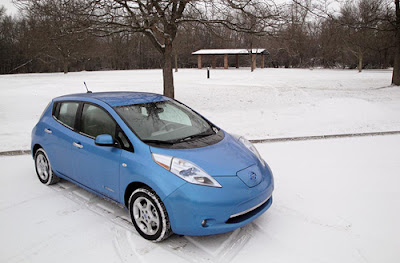
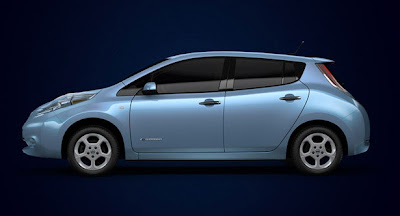
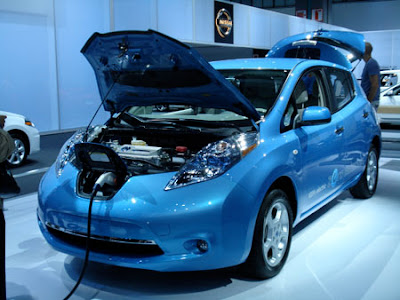
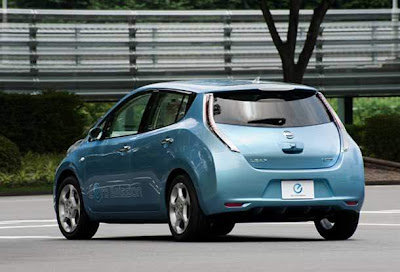
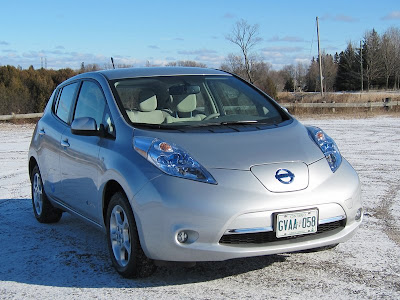
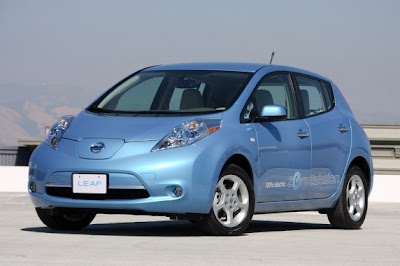
No comments:
Post a Comment